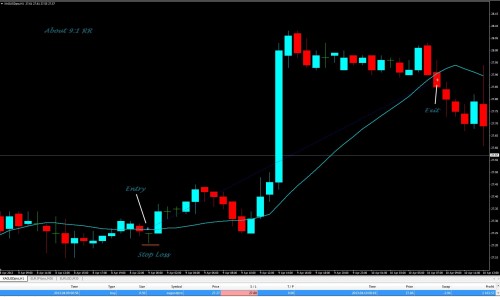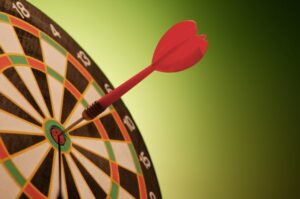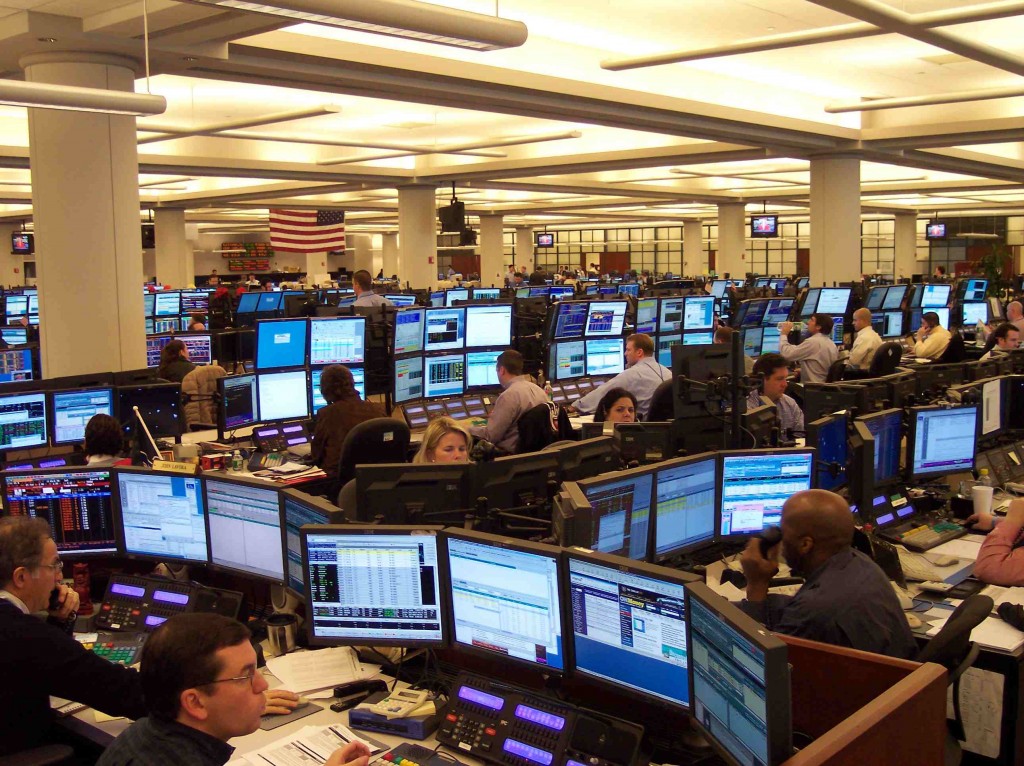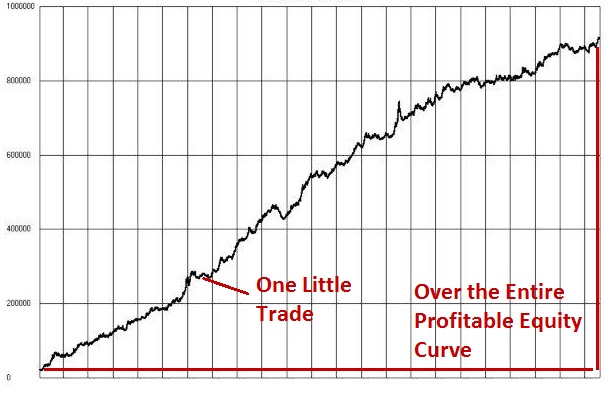NOTE: Check out Chris Capre’s Verified Forex Trading Results for 2017
As 2017 comes to a close (an interesting one thus far), I wanted to share my top 12 currency trade ideas for 2018. In sharing these forex trading Ideas, I’ll be talking about the price action context, key levels, trend bias, and where I think these forex pairs, stocks, CFD’s, commodities, and or global markets will hit next year.
FYI: They are not in any order of value or strength. Just what I’m seeing as the top currency trade ideas for 2018.
1) Bitcoin
As I’ve talked about in my video on crypto-currency trading, I think most people are overlooking key aspects of Bitcoin. In my view, it’s disruptive on a global scale, and will likely be adopted more in 2018 than it was in 2017.
I personally bought bitcoin around $3,000, Ethereum around 200, and Litecoin near 42. I even tweeted about this ahead of time.
Where are they now?
Bitcoin +320%
Ethereum +210%
Litecoin +200%
You’re welcome…
Now while I think all of them are due for a pullback (which they average about 1x every quarter between 25-40%), I’m looking at buying more bitcoin for a long term play. Let’s get into the price action context and where I see it going.
Bitcoin Price Action Analysis
Looking at the chart below, you can see where the crypto currency started, and where it is now. In my view, price action like this looks almost parabolic, and getting ‘frothy’. Do I think the price action is exhaustion? I’m not 100% there yet, but we’re getting close IMO.
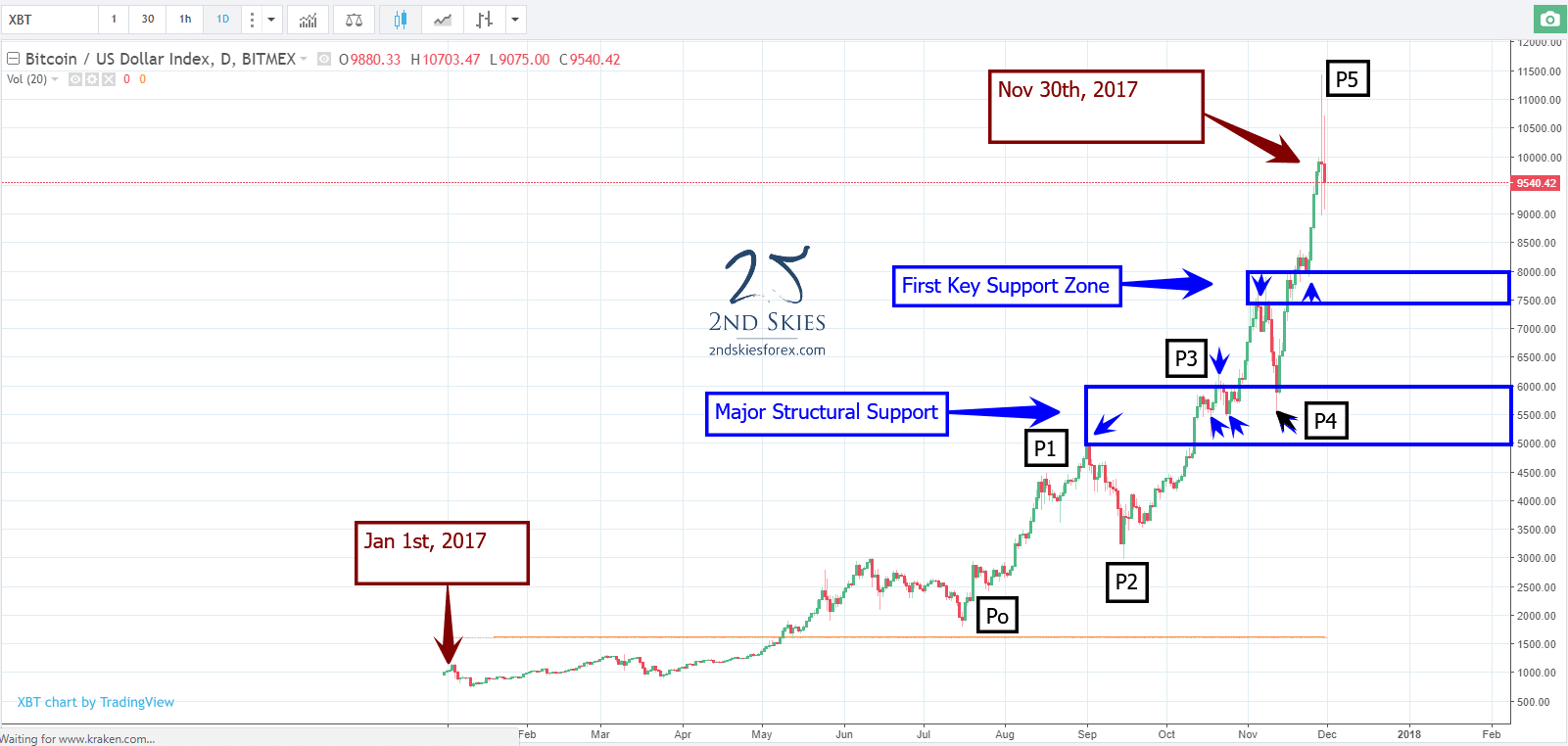
In parabolic, or exhaustion price action moves, each successive leg climbs faster, higher or both and will have a steeper angle on each impulsive leg up. This has to do with an acceleration of order flow as more players from institutional to retail move in.
If you look at the moves from P0 to P1 (1800-4900), that is $3100 from July 16th – Sep 1 (46 days). The next leg P2-P3 went from $3000 – $7600 (+$3600) in about 50 days. The last run went from $5500 – $11400 (or +$5900) in just 17 days. So all 3 impulsive legs up getting bigger in price moves each time. That is looking ‘frothy’ to me.
Hence I’m looking to buy on a pullback either at the first key support zone, or the major structural support. Also, a 40% pullback in price would bitcoin just under $7000, while a 30% pullback towards $8000.
Where do I think bitcoin is going next year? Assuming it doesn’t have a major crash (like it has 3x in the past of 50+% or more), IMO bitcoin will hit $20K before the end of 2018. If we get that major crash, it could be years before it makes new highs.
To Summarize:
ST Price action context: neutral to slightly bearish with current volatility
MT Price action context: bullish
LT Price action context: bullish
2) USDCAD
Jumping straight into the price action context for the CAD, the most important thing in my mind is the false break that happened late in Q3.
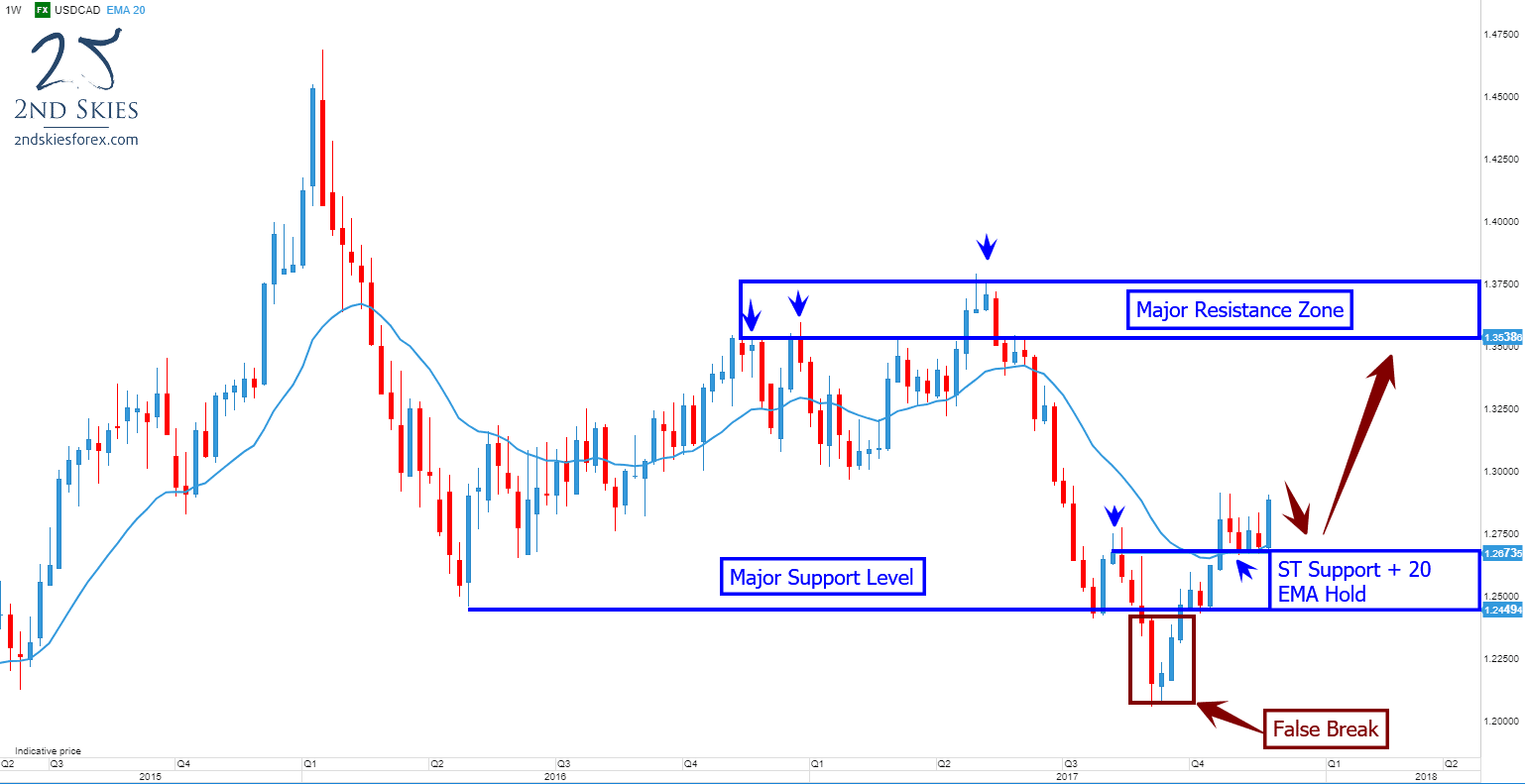
After breaking a multi-year support level around 1.2449, instead of finding new sellers and continued interest from current shorts, the pair broker sharply back above the key level, forming a false break setup.
After spending 3 weeks holding the key level, the pair has surged and is now holding for over a month above the weekly 20 EMA. All of these signs point to IMO more bullish prices for the pair.
1.2673 and 1.2449 become ST support in the current context while the next key resistance zone for bulls is between 1.35 and 1.3750.
To Summarize:
ST Price action context: bullish
MT Price action context: bullish
LT Price action context: neutral
Alibaba (BABA)
One of the most successful companies to come out of China recently, Alibaba (owned by Jack Ma) has had an amazing 2017. Starting at about $90, the stock is set to end November around $175, or a ~95% gain on the year.
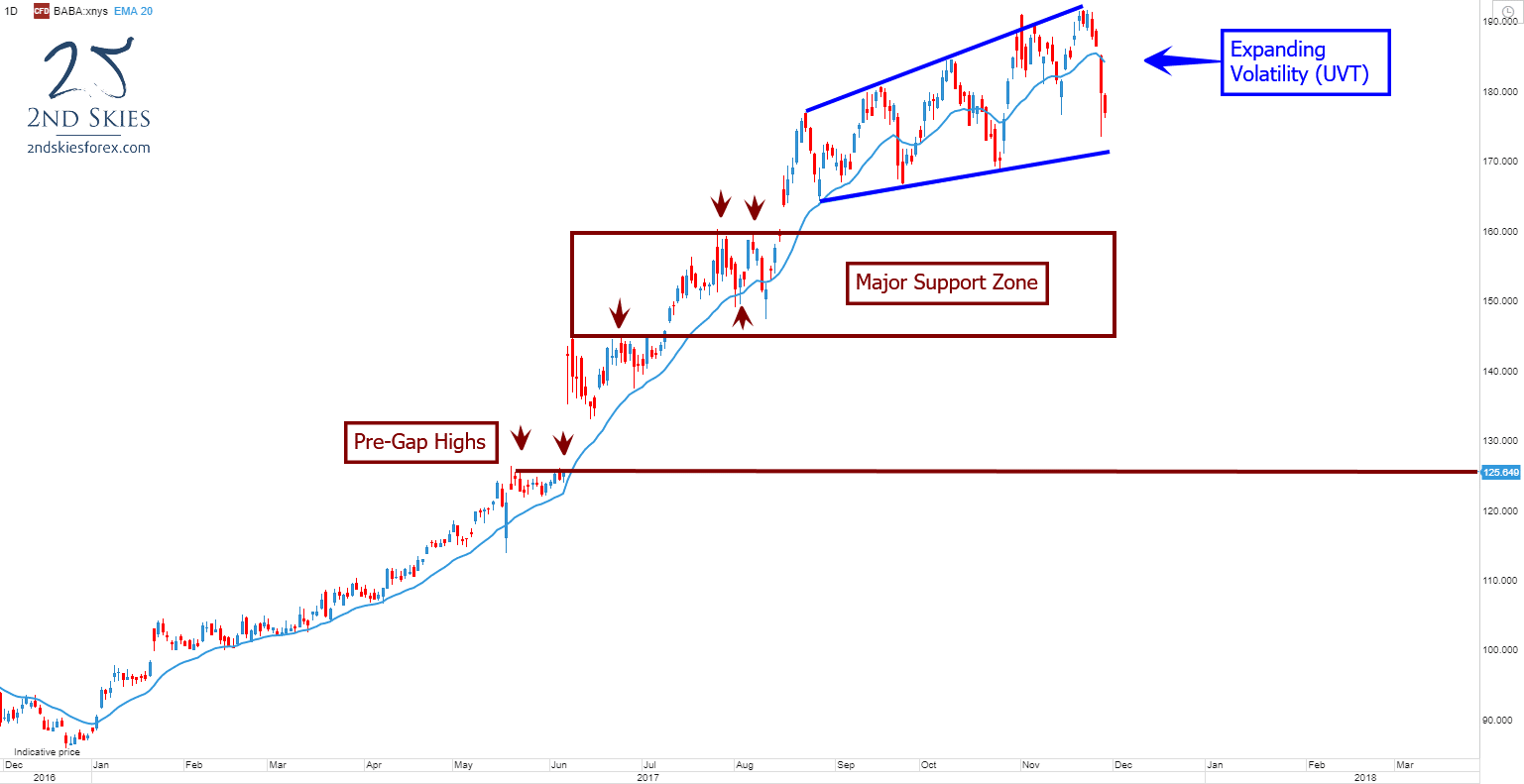
When I look at the current trend and price action, I see a clear bull trend with expanding volatility. Course members will recognize the UVT and what that means in terms of the order flow behind the market.
The expanding volatility (or UVT) doesn’t signify a trend change, so I’m remaining bullish on the stock for 2018.
The first major support zone comes in just under $160 and goes to about $145 where you can see a PBO setup.
The next support IMO is the pre-gap highs at $125.
Assuming we don’t get a major market crash (similar to 07-09), I’m expecting Alibaba to hit $300 next year, and a ‘most optimistic’ case with a $400 price target.
Simply put, this doesn’t look like the price action context or chart of a stock that is reversing or ending it’s bull trend.
To Summarize:
ST Price action context: neutral/volatile
MT Price action context: bullish
LT Price action context: bullish
Want to see my other top trades for 2018?
Then check out my Advanced Price Action Course where my members got a full video breakdown of my other top trade ideas for 2018.
In that video, I discuss the price action context, key levels, trend bias, potential entry points and price targets.
Course members also get access to my member market commentary (2-3x per week), access to the private member trade setups forum, trader quizzes, private member webinars and a free skype follow up session with me, so quite a lot.
I hope you enjoyed these trade ideas and hope to see you in the members area soon.
Tag Archive for: Forex Trading
Why do some traders you know seem to profit consistently, while those green trading days elude you? Why do you find yourself consistently making the same mistakes over and over again?
Traders who are successful month in-month out, handle losses in stride. They are comfortable with losing periods, while maintaining discipline. And most certainly, they do not accept under-performance, constantly training to improve their game.

The good news is – you can be a successful trader who profits month in-month out. Nobody is born to be a successful trader. These traits and characteristics can be learned.
Many of my profitable students, were not trained in any related field of finance. Yet they consistently make money.
Trading profitably is certainly possible for you, no matter where you are in your learning curve. But you have to work at it, and likely make a few adjustments from what you are already doing.
Here are 4 ways to drastically improve your forex trading.
1. Maintaining Commitment, Even During Challenging Periods
Throughout your learning curve in forex trading, the actions needed to get you there will not always be fun.
You have to love the process, and enjoy working towards your goals every day, regardless of the daily results.
If you were not being paid to trade, would you still love it, and enjoy the challenge? If so, you will maintain the commitment necessary to succeed.
2. Get Comfortable With Losses, and Losing Periods
How many emails have I received requesting a system with a high win rate? Enough to fill your inbox for a year.
By itself, the win rate does not guarantee profitability. Your risk of ruin does!
But I’m going to make a controversial statement here. That is:
Most un-successful traders who want a high win rate, are really asking for ‘compensation’.
What are they wanting compensation for? A lack of confidence. It is wanting something solid, yet virtually nothing is solid about trading.
Obsessing over a high winning percentage is short sighted. Directing your focus to continually getting better (i.e. on the process), is seeing the forest from the trees.
3. Intentions Must Be Consistent With Actions & Beliefs
If your goals, intentions & efforts in trading haven’t produced consistent results, there is likely one cause. You!
It is one thing to say or think, ‘I want to be a successful & consistent trader‘. But if the moment comes to fill in your trading journal, and you balk, then there is inconsistency between your conscious and unconscious mind.
Just like you may conceptually say ‘I want to be wealthy‘, but if you look around your house, and feel poor, you are not going to create wealth for yourself.
This is called ‘thinking in one way, and feeling another‘. Only when these two (thinking and feeling) come together in your mindset, do you produce results that match your intentions.

4. Ban Under-performance in Trading
What is one thing which without fail promotes under-performance? Excuses. Have you ever used excuses for your results in trading? If so, you are making it more probable you will under-perform.
The best way to ban under-performance in trading, is to ban excuses. Adopt a ‘no-excuses‘ approach to trading. Better yet – burn the following mantra in your brain:
I am responsible
You may not be in control of everything that happens in the market, but you are responsible for your performance.
In Closing
Ask yourself, how of the aforementioned forex trading tips and advice suggestions would help you in your trading performance? If you were to adopt the above suggestions, would they change your mindset and approach to trading?
Those familiar with my blog will know I’m a big sports fan (you can read a recent post on sports and trading here). Now I cannot say I’m a hard core fan of one sports team, as I have a few and enjoy some. But more importantly, I’m a fan of sports, particularly professionals. These are the top in their profession, and every time I see them, I learn something.
They have trained for thousands of hours. They work on every aspect of their game. The best work tirelessly to take things to the next level, and yet consistently practice the basics.
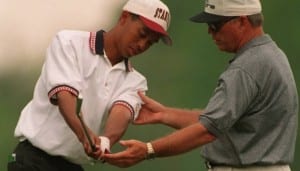
I appreciate the wisdom they show to us, their athleticism, and their mindset of success.
Now along those lines, what do Tiger Woods, Peyton Manning, and Georges St. Pierre have in common besides what I listed above?
They all work with coaches and mentors. Tiger has one coach he works with, Peyton has several, and Georges can have up to 20! Yep, the best in their field who are paid millions yearly to do what they do, work with coaches.
No champion or elite athlete reaches their top performance levels without coaching and mentoring.
NOTE: For a couple of good books on elite performers, training and mentorship, check out these books by Coyle and Colvin.
Now the next natural question to be asked is, ‘why do you think trading is any different?‘
It’s not, and there is a reason for this. Woods has spent his entire life perfecting his golf skills, yet works with a coach daily. Peyton is setting records this year at age 37, yet trains with several coaches. Georges is a record setting UFC champion with 4 different black belts. He too has coaches.
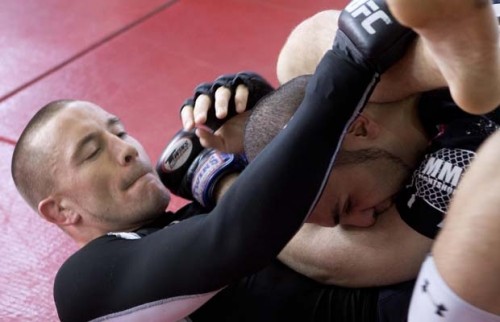
Hopefully this is clarifying why you should be working with a mentor as well.
I recently heard the most ridiculous argument that everything you need to learn about forex trading you could on the net. How ridiculous! If that were the case, why would banks spend hundreds of thousands each year training their traders? Why would Top hedge fund traders working with $250m (million) books+ have coaches and mentors they work with? It should be painfully obvious why.
I myself work with several people. There are two I work with specifically on my trading mindset and am about to add a third. I have a programmer with a graduate degree in financial modeling I consult with for risk models and money management strategies. I pay these people a lot of money, but there is a specific reason I work with them. Simply put – they enhance my performance, help me see things I am missing, and provide support along the way.
How to Find A Trading Mentor
If I had to break it down simply how to find a trading mentor, I would suggest looking at a few things;
1) Does their teaching style make sense to you and what they are saying clarify things?
2) Can they simplify things without making them to basic or freshman?
3) Do they respond quickly to all your questions and seem supportive?
4) Do they offer insights beyond trade setups, such as building a successful mindset, and obtaining the proper skill set?
If they offer the four above, and you have a good feeling about them, then that is someone to work with. Now whether you choose me or not, is less important to me personally. What is more important is finding the right person for you.
Regardless of who that inidividual is, find someone to coach, mentor and train you as it will definitely accelerate your learning curve, and increase your chance for success. There is a difference between being interested and being passionate about trading. Look behind all elite performers across all fields, and you will almost always find a mentor.
One more thing I’d like to mention before going that Tiger, Peyton and Georges all have in common. They all train incessantly and are constantly working on their game.
I recently had a great opportunity to see a host of famous actors speak along with meeting several of them. They shared a lot of stories about their experiences throughout their career, including several of the roles they are famous for. One story in particular made me think of trading.
What most of us see when we witness actors is the success, fame and money they have made over the years. But many actually have a story to tell that is unique to them. This story, if you listen carefully, often highlights a wisdom which can be useful for our lives (even trading).
Although I cannot say he is my most followed actor, after hearing some of his personal stories, I was impressed and appreciate his ‘wisdom qualities‘.
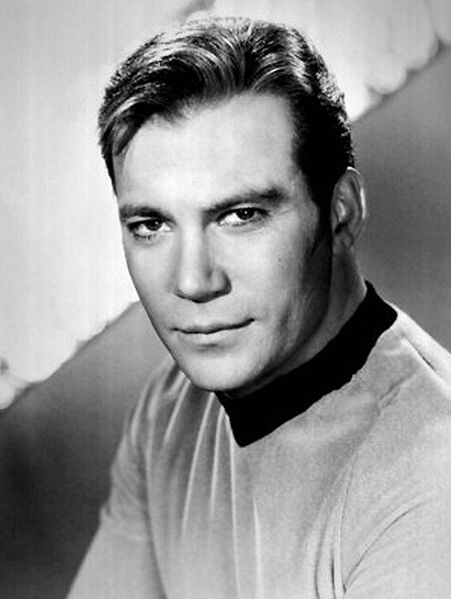
William Shatner is most famous for his role as Captain Kirk in the popular Star Trek franchise. If you were to interview 10,000 people and say his name, probably the first words from 95+% of them would be ‘Captain Kirk‘ or ‘Star Trek’.
What most do not realize is he originally trained as a classical Shakespearean actor with his first minor roles in the early 50’s. Slowly working his way up to small TV/Broadway/film roles, it wasn’t until 1966 that his most famous role as Captain Kirk.
The original show ran from 66′-69′, but was then canceled after receiving moderate reviews. The year it ended was also the same year he went through a divorce. This is where it starts to get really interesting.
After being typecast as ‘Kirk’, he had a hard time finding roles. Never mind the fact he went through a divorce (difficult in itself), he had three kids to feed and lost his home. He lived out of a truck bed camper for a quite a while, where he had days without food in the fridge. He took whatever small roles he could to support his kids.
During the 1970’s, he got small roles which eventually led back him landing a film role in the first Star Trek film again as Captain Kirk. Six more Star Trek films, along with two TV series roles led to a new level of fame that would last him a lifetime.
To Recap
He worked for 15+ years before landing the Kirk role, to which he played for 3 years and then lost his job. He lived in a camper with no food for days on end, and did whatever it took to make it work. He never stopped working towards his goal, no matter how hard it got, even after two+ decades with no/little money for his hard work. Yet after 27+ years of this, he finally landed an opportunity which lasted him a lifetime.
He has demonstrated the mindset of success, a determination and willingness to keep going after his goal after incredible hardships and failures. Ironically, these are the same things required to be successful in forex trading.
One last note I’d like to share about Mr. Shatner before discussing another subject.
Through some really savvy business deals, he has become a deca-millionaire several times over. He is now 82 years of age, yet still works incredibly hard – traveling to conferences, TV projects, one man shows, competing in horseback riding and more – all at 82!
He doesn’t need the money at this point (hasn’t for decades) – yet works tenaciously hard. Why? Because he is passionate about what he does. He likes to create, produce and continually challenge himself.
Underneath the unique history of his failures, work ethic, and successful mindset is another critical point. That is – most people think of success as a straight line, but in actuality it is nothing from it. It is beset with years of hard work, preparation, and overcoming challenges. It is wrought with failures, mistakes, and low points.
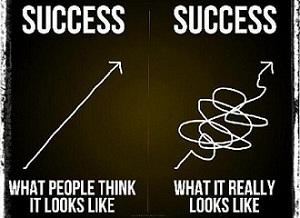
Most people go through these things, whether its acting, sports, or trading. The difference between successful and unsuccessful people is how they respond to those moments, particularly when things go wrong or become difficult. Successful mindsets keep moving forward and find solutions.
They are willing to work hard whether their fridge is empty or full – have a home or not. They are passionate about what they do, and meet each failure with more effort than before. What is required to be a success in forex trading is the same.
Your path as a trader and equity curve will in all probability not move in an upward 45 degree line. It will require you to work when you do not want to, and make decisions that feel incredibly uncomfortable (almost irrational). They will not be your preferences, nor will they be easy.
You will need to prepare day after day, and the work never ends. It will require you to maintain a high level of energy, and will demand you to get up from each failure. Your emotions will fight you at almost every step in the way – yet you need to be calm and clear.
This is what is required to be consistent and successful at forex trading. Whether you meet this challenge will be entirely up to you, your mindset and choices from this moment forward.

But I’d like to end with a hats off to Mr. Shatner for sharing some of his wisdom qualities and stories. He has earned his success, traversing difficulties where most would fold, while never stopping to move forward.
Often due to low liquidity, summer forex trading can be fickle, whimsical and often times dull. Staring at charts for hours or days when the price action is slow isn’t going to make you a better trader, or make more profits. We need to be using our time to improving our edge whether we are trading or not. So what do you do when the ‘watching the corn grow‘ moments come by?
I recently got an email from a new student who sent me a month of their trading prior to joining my course. Their story is just like many others – they traded well on demo, went live trading, and lost a fair amount of their account. Now they are trying to get back their losses in the quickest way possible.
Sound familiar?
I can appreciate wanting to make gains as quickly as possible. Who wouldn’t? He asked me ‘what is the fastest way to successful forex trading’?

Without a doubt, he had a sincere desire to trade consistently (most do). But two crucial things were missing from their plan.
These two things when done well, will lead to success in trading (and perhaps any skill) faster than hunting for that ‘magic system’ which will make back all your losses. Without this necessary pair, what you want to accomplish (making money / trading successfully), will not happen. The results will not come.
So what are these two crucial things you need to focus on? Process and Progress.
Although the goals (making money, trading from home, consistent profits) are what we strive for in trading, when results become the sole focus, your ability to make money trading becomes hindered.
Why?
In order to reach the level of trading profitably and consistently, you have to build the abilities and skill sets necessary to get there. It sounds obvious, almost easy when you hear it, but it is nothing of the sort. It is one of the most elusive aspects of the trading mindset which new traders fail to understand.
How do you get there?
Process First -Then Progress
This starts with focusing on the process by a) doing the steps necessary to build the skill set, which b) allows you to perform.
Do you think an architect started off by creating buildings? Or do you think they had to learn the math, geometry, and basic skills needed to build a structure?

If you focus on results only, you will skip steps because your focus is not on the task at hand. It sounds counter-intuitive, but your goal in the beginning should not be to make profits. It should be to acquire the abilities (through training and practice), which allow you to perform and trade well.
Remember this next statement well, but a trader will not gain the results wanted BEFORE obtaining and building the necessary skills to reach that result. This comes after you have built those skills.
This is why so many traders fail. They focus on result, not process.
If you think focusing on the process is not important, ask yourself;
‘When getting a complex heart surgery, do you want the doctor focusing on the money he makes from the surgery, or the very complex precise cut he is about to make around your heart?’

Focusing on Progress
Moving on, once your focus is dedicated to the process, it’s time to track your progress (e.g. end of the trading week analysis).
In the very beginning, I have little concern for a traders profits or losses when they first come to me. My main concern is identifying what parts of the process they are missing or skipping. Then I have them refocus on that so they build the base skills needed.
For example, if a trader (you for example) has trouble keeping risk consistent, and fail to use the risk of ruin formula, you will not make money. So my first goal is to have you focus on keeping risk consistent (process). If you show improvement in this, I’ll have you track the ‘progress‘ you are making.
This latter focus gives you confidence. It communicates to your self-image and mindset you can improve, get better and grow. It self-reinforces you focusing on the process, which helps to see the progress you are making.
If you keep this focus, and don’t skip any steps – it is only a matter of time before you are making money trading.
Earlier lastweek I wrote a critical article titled ‘5 Things All Forex Traders Must Avoid‘. I covered some of the more prolific habits and pitfalls all struggling traders consistently fall into. Ironically these are some of the most common things I hear traders talking about when they are wondering why are they not making money in forex.
The good thing is – all of these habits can be changed. With these forex trade tips you certainly can trade profitably, and make a lot of money doing so.
In today’s article, I’m going to cover the 5 points on how to turn your forex trading around by offering the 5 solutions to what all forex traders must avoid.
#1 Focus on Opportunities
Behind each obstacle is an opportunity – to grow, to overcome, to profit. The difference between successful traders, and those not profiting is the successful individual sees an obstacle, looks for a way to remedy it, and take advantage of the situation.
If you are constantly thinking about a prior loss, how much you are down, how you don’t have time to fill out your journal, or trade your plan, then shift your focus to the opportunity available. You may just see your energy, focus and trading change.
#2 Focus on Every Aspect of the Game
Can you guess what articles are my most popular? If you guessed about price action strategies – you are correct.
Can you guess which are the least popular? If you are thinking articles on trading psychology and money management – you are two for two.
To be successful at most endeavors (trading especially), you have to do things outside the norm, because most are not successful. Most are devoting all their time looking at charts, learning about trading strategies, looking for the holy grail, the system that will solve all their problems. Yet most spend less than 5-10% of their time building up their mental capital, their conscious mind and trading mindset.
Perhaps the very reason why you are not trading profitably now, has a direct relationship to where your focus is. Food for thought.
#3 Focus on Solutions
Don’t have good money management? What is your solution? Don’t deal with the emotions of trading? What is your solution? Having a difficult time sticking to your trading plan? What is your solution?
While almost all those who are having trouble trading are focused on the problems, or things out of their control, those making money and getting better are focused on the solution.
#4 Focus on Process
When I first started training in Archery, I made an effort to focus on the process, the technique, my mindset. I knew if I got the technique right (body alignment, release, follow through, etc.), the arrow was most likely to hit the target. In some Korean schools, they will actually have you focus on the technique for months, before actually firing a single arrow. That is ‘focusing on the process’, and the Korean shooters are some of the best in the world.
Instead of focusing on hitting the target all the time and making all this money – focus on following your trading plan, on knowing its strengths and weaknesses, on your mental process.
To become successful at trading – you must focus on the process necessary to achieve your goals. Focusing on results first is both a distraction and mistake.
#5 Protect Your Mental Capital
Do you beat yourself up after a loss or mistake? If so – do you think you are protecting your mental capital? Are you focusing on all the things wrong, do you think this is building a successful trading mindset?
Confidence does not just come from successful results – it comes from the belief you can trade successfully – and this has to be built up and protected.
I hope you enjoyed these 5 solutions to what all traders must avoid, and how to turn your trading around.
Kind Regards,
Chris Capre
Want to turn your trading around and build a successful trading mindset? To learn more forex trade tips – check out our Forex Trading Courses where we teach traders to become profitable.
Last week I talked about the importance of looking at the details and refining one’s trading game in Forex Trading, Ted Williams, & The Little Details Pt. 1 article. All highly skilled professionals realize paying attention to the details pays dividends, and often leads to the difference between being good and great. Today is the continuation of that article, where I will be sharing how making a small trading adjustment in my trading could lead to a six-figure change in profits per year.
But before I get into one small adjustment I need to make in my personal trading, I want to discuss a few amazing examples of how Ted Williams really paid attention to the details, and how these small things separated him from the rest.

Attention to Details
Ted was known to be obsessive about his hitting skills and had made several adjustments which allowed him to understand hitting better than most of his time. Here are some of the details below;
-He traditionally used a much lighter bat than most of the heavy hitters (sluggers) back in the day. To test how sensitive he was to the lightness of the bats, he was once presented with 4 bats, 3 weighing 34 ounces, and one weighing 33.5 ounces. Most people on the planet now could not tell the difference between 34 and 33.5 ounces, a .5 oz difference, or to put this in context, a 1.4% difference in the weight of the bat (.5oz / 34 = .014, or 1.4%).
Yet Ted was able to consistently tell the difference and identify the lighter bat each time.
-Ted used to warn his teammates to avoid leaving their bats on the ground. Since the bats were made of wood, this would cause them to absorb the moisture in the dirt or grass, and thus become heavier, which would slow their swing down. How would he have known this unless he was sensitive to all the details?
-After he retired, in a Sports Illustrated article, he was able to demonstrate how swinging at a pitch, just one baseball width outside the strike zone heavily affected his batting average, and he divided the strike zone into 77 baseballs, with each baseball being = to a particular batting average for each pitch in that location.
When reading the above examples of how Ted paid attention to the details, you can see why he was such a great hitter and baseball player. All of those small little details, while they may seem insignificant on their own, led to a huge difference between him and everyone else.

Paying Attention to Details in Trading
This is exactly the same for trading. Did you know using the risk of ruin tables, if you were 35% accurate, risking 2% per trade, and always taking profits at 2x your risk, you would have an 8.37% chance of blowing up your account?
But reduce your risk to 1% per trade, and the chance of you blowing up your account is only .7%, which is improving your chances of being profitable 119x?
That is quite a huge difference, all with one small detail.
SIDE NOTE: This is also the reason why we always measure risk in % terms, not in dollars terms. Professionals don’t measure risk in terms of dollars, they do it in terms of %’s, because this is where they can use the risk of ruin and math to guide them about trading performance as dollars are relative to you.
The One Details Which = A Six Figure Difference
I was reviewing my trading journal one day in March this year, and noticed a behavior continually repeating itself. I had been making sure to mark in my journal since 2012, every time I entered at market, but also noting if I was entering a bit early in relationship to the system entry. I marked it with the code EM (‘entered at market’) / HOP (‘hit original price’).
Several weeks ago, I noticed this happening several times in the same week, so I started to go back through my entire trading journal over the last 12 mos to see how many times this happened. The answer….
78% of all trades entered at market, would have executed at the original price the system gave the entry at. This occurred a total of 242x in the last 12 months.
3.6 Pips
I decided to compile a few more stats to really get into the details and see what kind of effect this was having on my trading.
The average entry was 3.6 pips less than my system entry price.
Now 3.6 pips may not seem like a lot, but it has a significant effect on your trading. To give an example, lets say you have the following trade setup with my system giving me the stop and take profit (limit) levels using the following data below;
Long EURUSD at 1.3003 (entered 3 pips early at market)
Target = 1.3103 (100 pips)
Stop = 1.2953 (50 pips)
Total reward to risk ratio is 2:1
But lets adjust this by just 3 pips, meaning I entered at 1.3000, still had the stop at the same level (1.2953) and target (1.3003) assuming they were my targets based on the original price action system numbers.
This translates into the stop being 47 pips, and the target being 103 pips, or a 6 pip difference. This also increases the reward to risk ratio from 2:1, to 2.2:1, or a 10% difference just in the R:R ratios.
This 3 pip earlier entry, was in reality a 6 pip difference, but for me, the number was 3.6 pips, so a total of 7.2 pips of difference in performance. Assuming a 50% win ratio, 7.2 pips x 242 EM/HOP (entered at market/hit original price) would result in a 1742.4 pips difference. Based on the average lot size, this would = ~200K USD. Even if we halve this performance, it would still be ~100K USD, which is a huge difference in performance, per year!
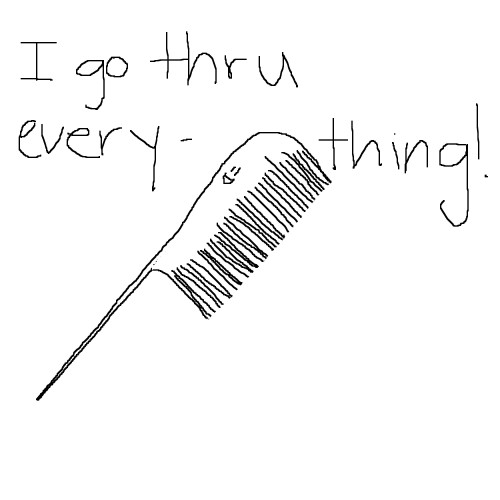
The Difference Between…
After getting over the initial shock of how much of a difference this small detail meant in my performance, I have come to a greater understanding of how important the small details are in trading and performance (in anything). Often times, these small details can be the difference between losing and winning, between breaking even and making money, between being just good or great.
Thus, make sure to apply a fine comb to your trading account performance and journal, to mine the little details which could be separating you from losing and winning, or making a little money to a lot. You cannot underestimate the power and difference a few small pips, or one small bad habit can have on your trading.
All highly skilled professionals pay attention to these small details, as they can truly create a world of difference in performance. Jimmy Hendrix realized this when adjusting his guitars. Ted Williams also realized this when it came to baseball and batting.
The question then remains, will you take the time to find the little details which could be holding you back? How much is it worth to you, to take a few hours away from the screen time, the beach, or the bars drinking, so you can increase your performance by a huge amount? The benefits could last you a lifetime, and it’s possible this could be one of the best reward-to-risk plays you ever embark on.
There is a story about a beggar several hundred years ago from a small village. He was orphaned at a young age, and with no education and family, he had to fend for himself. He was reasonably intelligent and able, despite his challenging start. Living in a small village his whole life, since the village was abundant, he was able to beg for food and receive what he needed to survive.
He tried several times to find menial work to give him some basic subsistence, but was unable to find any.
Difficult Times
Later, some hard times fell upon the village, and many people were struggling. The beggar went around the village asking for food, but many were unable to offer him any. He went without food for some time, barely maintaining his energy living off what little he could find.
Eventually, after struggling for many months, unable to find any work, he decided to leave the village and go to another looking for food. Working his way up the mountain, unfortunately he was unable to find any food or work in the nearby villages after his repeated efforts.
Now days later, it was getting dark, he started to lose hope and realized the end may be near. He eventually found a cave which was empty to rest in, and spend his last moments. He was sad because he really felt he could do something in this world, but was unable to make things work.
Dark and barely able to see, he started to lie down on this rock, and noticed it was really warm. He thought to himself, ‘Oh wow, this rock is really warm. I am glad I was able to at least feel warmth while I rest here‘.
Shortly after closing his eyes and falling asleep – he died…
In the Very Same Cave
The next day, a group of explorers were looking for something on the mountain, and passed by the very same cave as the beggar just passed away in. As they entered the cave, they noticed a motionless person lying on a rock, and realized he had passed.
Out of respect, they decided to bury him, but when they moved his body, they noticed something that sparkled really bright. Under the man’s head where he was resting when he passed, was gold.

Akin to Beginning Traders
This story is very similar to many beginning traders who come to trade the forex market. They see the potential of what forex trading can offer, but stability, consistency and success seem just out of reach.
They often try a system for a short period of time, but then abandon it if it doesn’t make them a million dollars after a few months, let alone with the first few trades.
What many fail to realize, is that the actual gold they were looking for (a consistently profitable system), was right underneath them the entire time. They likely have been resting on something highly valuable, but because of doubt, limiting beliefs, and unrealistic expectations, are unable to see what is in front of them. When encountering obstacles, instead of working through them, they abandon their system, and look for the next best thing.
The Main Difference
I think the main difference between profitable and unsuccessful traders, is in how they approach the market. Consistently profitable traders do not analyze or value their abilities based on their last win or loss. They are trading and thinking in probabilities.
What the consistently profitable traders are willing to do, was to work through their obstacles and challenges. They understood what they have available to them, and work at it until they are successful. They realize the pot of gold has been right underneath them the entire time, and all they had to do was dig – long, hard, and with the unfailing belief they will get to the gold underneath them.

I know of no profession, sport or skill based endeavor you can enter, that within a few months, you are operating at a professional level. Yet many beginning traders quickly abandon something if it doesn’t create a 45+ degree equity curve and hit over 80% accuracy in the first month or two.
What has fascinated me, is how I could teach traders the exact same price action or ichimoku systems, yet get wildly different results, with some being highly profitable and consistent – while others not. Usually those who stick with it regardless of the results eventually find their ground, and start to trade consistently and successfully.
Imagine a World…
I cannot imagine a world where Benjamin Franklin gave up after his first few rejections and failures, or Einstein not pursuing science after failing to get accepted at the Swiss Polytechnic school, or Michael Jordan never playing basketball after failing to make the Varsity team in High School.
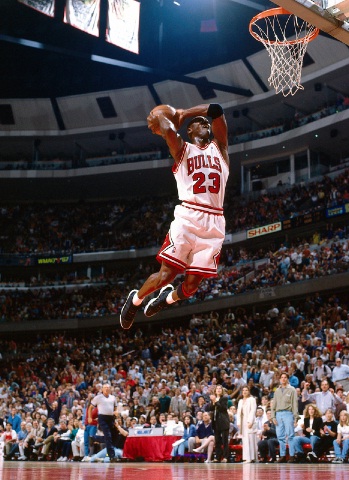
The good thing is, whatever is separating you from being consistently profitable at this moment, is completely learnable. The mind has neuroplasticity to it, & without a doubt you can learn to trade successfully.
So keep digging for your pot of gold. Work with a trading mentor, continue to improve your systems edge, money management, and building your successful traders mindset. You might just be surprised what you’ll find if you keep digging.
The A+ Setups, The Trades That ‘Kick You In The Chin’
There is one mistake I see beginning traders constantly making. They wait on the sidelines for days, waiting for A+ setups, waiting for setups that ‘kick them in the chin‘, or ‘knock them over the head‘.
If you need to get kicked in the chin or knocked over the head to act, perhaps you should consider MMA, not trading. If you need this to actually do something – you really are missing the most basic thing of being a successful trader.
Your job is not to sit there like Johnny Bench waiting for the delivery of the perfect pitch. Your job is to think in probabilities, to think in numbers and expectancy. This is one advantage for becoming a better trader by learning how to play poker.
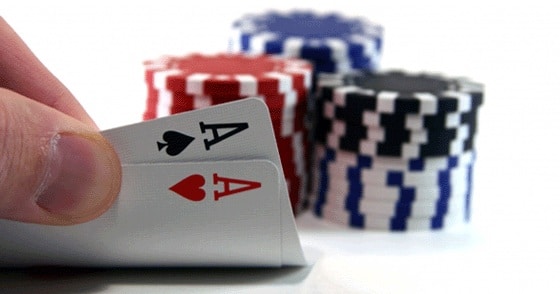
Positive Expectancy
In poker, they have this rule about positive expectancy. It basically involves not waiting for your power hands to arrive before you play. You should [pay your medium strength hands in the right environment because they have positive expectancy.
Sure, you can wait for AA or AK suited before you get involved in the pot, but you are passing up many hands that make money in the long term. You are passing up hands that have positive expectancy. This doctrine about waiting for A+ setups is a fallacy espoused by people who really do not understand trading. It is important to remember trading is not a fashion contest.
Trading is thinking in probabilities and finding setups that make money over 100, 1,000 or 10,000x.
You have to understand, that you may not make money on the trade right now, or even the next one, but if it makes money over the long run (has positive expectancy) then you need to pull the trigger.
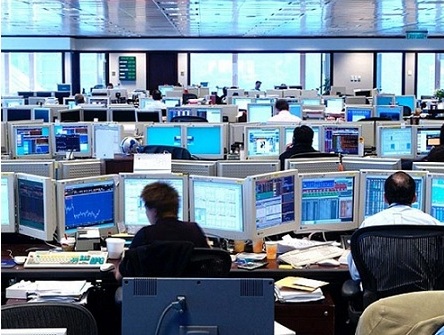
Beginning Traders vs. Professional Traders
Beginning traders make the mistake of waiting for setups which have 60 or 70+% accuracy, trading at 1:1 or 2:1 reward to risk ratios. Sure…mathematically these will make money, but guess what – did you know you could have a system which is 35% accurate which still makes money (and a lot of it) over time?
Although losing 65 trades out of 100 may seem daunting, a professional trader doesn’t skip these trades – because they know they make money. This is the difference between a beginning trader and a professional – they think in probabilities. They are comfortable with uncertainty, because they trust the process.
Breaking It Down
To look at it mathematically, if you take 100 trades at 35% accuracy, you win 35 and lose 65. Now if you always target 3x your risk (meaning if you risk 50 pips, you target 150 pips each time), this system will make money. Although you may lose the next 6-7 trades, all you need to do is win 3 or more, and you’ll make money over those 10 trades.
This is the difference between a professional & beginning trader. They understand the risk of ruin principle, and are not worried whether they will win the next trade. Beginning traders rationalize losing the next 6-7 trades as being bad for their overall trading, when mathematically you can still make money.
What Separates Beginning Traders from Professional Traders
Professional traders are not worried about the next trade winning or losing. What they care about is making money long term and over time. They want to maximize their profits by playing the mathematics – by thinking in probabilities.
Although beginning traders hang their entire psychology, confidence and performance on the next trade – you have to look at the next one as just one free throw in the thousands you will make over time.
A Single Grain of Sand & Your Positive Sloping Equity Curve
One way to relate to an individual trade is to see how really unimportant one trade is in the grand scheme of things. A good visual for this is – if you are currently holding a hand full of sand you picked up from the beach – that each trade is like a single grain of sand.
If you are using proper risk management and thinking in probabilities, that one grain of sand is really insignificant. Put them all together, and it adds up to something more substantial, but by itself, it really means very little.
Now imagine your positive upward sloping equity curve over the next few years, with hundreds of trades per year under your belt. That one grain of sand really means nothing in the entire equity curve of profitability. It’s just a tiny data point in a very large set.
If you can really grasp this, I guarantee after you have a long trading history with hundreds (if not thousands) of trades under your belt, one little trade will not mean anything to you. But what will matter, is if you pass up trades that have positive expectancy with lesser accuracy, you may lose massive profits over time.
Thus make sure to let go of whether the next trade will be a winner or a loser. Try not to invest too much energy in this. Start to think like a professional, and pull the trigger whether your next setup has high or low accuracy. If your price action strategy has positive expectancy, then that is what you need to know. When you do, you’ll realize a huge piece of the missing puzzle as you’ve started to think like a professional, and started to think in probabilities.


